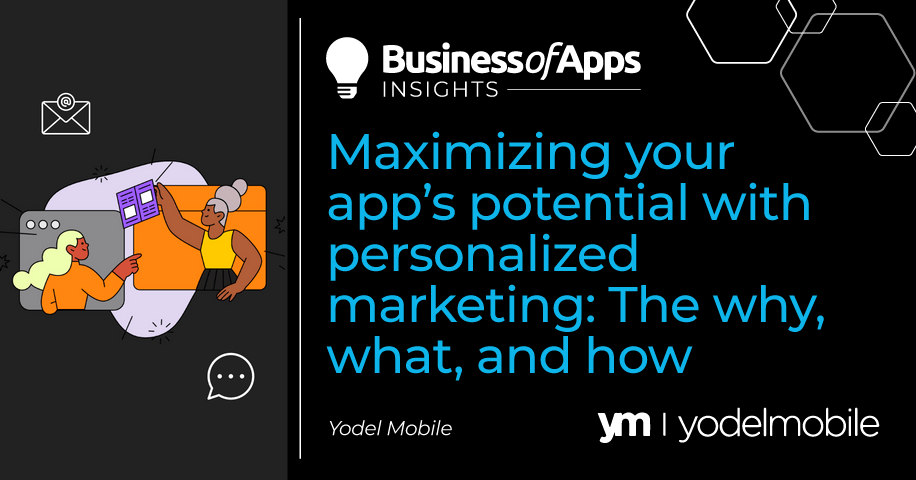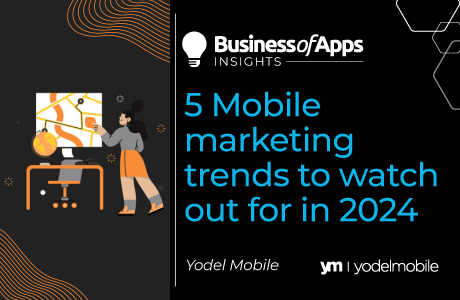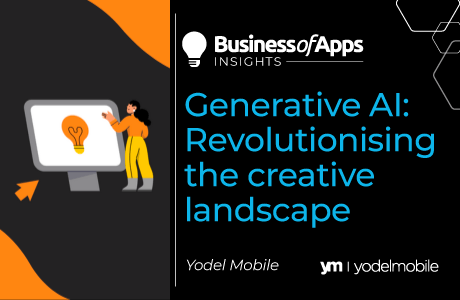As any marketer will tell you, we are simple creatures at heart – we all just want to be seen and to feel understood. Yes, even by companies.
The latest data shows that 63% of smartphone users are more likely to buy from companies that offer recommendations that are relevant to them. This is why personalised app marketing is now a must-have, not a nice to have.
This post was first published on yodelmobile.com.
What is app personalisation?
App personalisation is the process of creating a customised user experience tailored to a specific audience through product design, messaging and engagement.
The idea of personalisation isn’t new. It was back in 2000 when Amazon founder Jeff Bezos said “If we want to have 20 million customers, then we want to have 20 million ‘stores.’ Our mission is to be the earth’s most customer-centric company”. Over 20 years later, personalised app marketing is expected in almost every industry there is – and is an expectation for mobile app users.
But it can be an overwhelming prospect to start treating every single customer as an individual – does your future involve penning an individual missive to each every time you want to send them a marketing message? Not at all. Technology can step in here, saving you time while creating a tailored message that reaches the right person with the right information every time.
Why personalise your app marketing?
Given the technology available, it’s unsurprising that 71% of people expect personalisation as standard and 76% of people feel frustrated when this doesn’t happen. Thankfully, mobile app businesses have the data at their fingertips to answer customers’ demand for tailored marketing.
The sophistication of the market means that there are three main levels of mobile app personalisation that can be achieved.
- Reactive: This is the most basic level of app personalisation. It involves simply pulling a user attribute to personalise communication, for example using their first name in the opening of an email (user attribute), or welcoming them to the service on completion of registration (event data).
- Proactive: Combines reactive app personalisation with external data, such as active offers, your latest blog post or product recommendations.
- Individualised: This one is the gold standard of app personalisation as it’s the most sophisticated level of personalisation you can implement. One way of doing this efficiently is by utilising dynamic data based on user attributes or event data. For instance, the event might be a ‘show watched in last 7 days’ by streaming app users. Dynamic content will ensure to serve each user an image in email comms from the show they have streamed to personalise the experience.
Personalisation types
Source: Yodel Mobile
What is dynamic content and why is it important?
Dynamic content, in short, is any digital type of content (images, text, videos) that changes based on user in-app behaviour, interests and preferences.
The advantage of dynamic content is that the heavy-lifting is done by the technology, not by the person deploying the technology. So, in the previous example, rather than creating a marketing automation campaign for each TV show so that each customer receives a relevant email, one campaign is created, and the relevant piece of content is pulled in automatically.
Guide To In-App Engagement
Principles and best practices behind in-app engagement to drive growth for your consumer business.
Download nowDynamic content can take the form of:
- Imagery such as including a picture of a pair of shoes left in the cart
- Text such as “are you still searching for the perfect shoes?”
- Customer data such as using location (and weather) to inform the messaging – “here are five snow-friendly shoes you’re going to need in Manchester this week” (the possibilities are endless)
And of course, the desired outcome of dynamic content is increasing brand loyalty and customer engagement. When German social network XING nudged customers to add more contacts to their network by dynamically adding the names of people they might know, contact requests increased by 18%! In fact, communications judged as relevant and useful can create lasting customer loyalty and drive revenue growth by 10-30%.
Challenges of personalised app marketing
But what if your product has a long list of potential user segments?? Take a job site app that caters to a broad userbase in the creative industry – that means the app is going to be used by graphic designers, copywriters, strategists, art directors and more. Creating a campaign for each segment will mean that everyone will feel great about the marketing they receive, but it’s a lot of work to set up, monitor and iterate on them.
How to solve them
The answer is to find commonalities between your segmented groups.
In the example above, users might have one of hundreds of jobs, but they’re all likely to fall into either looking for full-time work, part-time work or freelance work. This means you can set up a campaign on this basis (“Four must-have resources for creative freelancers” etc), drastically reducing the time required.
To make this a reality, your data needs to be organised in a way that makes this possible. That means identifying as many customer attributes as possible, in order to provide yourself with multiple campaign options.
How to set up personalised app marketing campaigns
Ensure you’ve got data fluidity
We’ve already covered data from a lot of different sources. You’ve got user attributes, event data, product data and perhaps even external data, such as weather or local services. In order to use it all effectively, this needs to be centralised using your product analytics tool and fed to your CRM tool for execution.
By doing that, you’ll be able to get a good overview of your users and start to draw conclusions regarding how they should be segmented.
For example, in our previous job board use case, is it worthwhile to segment users based on their age? Possibly, as it might affect the kind of roles they go for. Does it make sense to segment them based on what operating system they use? Probably not.
Make sure your data is relevant
How often you refresh the data you have depends on the type of communication you want to send. An abandoned cart email is only of interest to a shopper for a few hours after they browse. The fact that someone watched a particular show is probably useful for a maximum of seven weeks after the event. Your time period will depend on your app vertical and your users’ behaviour.
Map out your app lifecycle
Generally, this will follow Activated user -> Engaged user -> Monetised user -> Retained user. Turning an Activated user into a retained user is the goal of each app marketer as it ensures sustainable growth. Once you’ve mapped and defined each of those users for your app specifically, you can start to understand what your user cares about, what data is relevant to that stage, and how it can be used to move them toward the next stage.
For instance, if an engaged user has viewed three different items over 14 days, those products can be used as dynamic content in an email to push the user to convert.
Activity levels also matter. You might notice that activated users use the app less frequently than monetised users, so you need to bear that in mind when you’re deciding on the frequency of your communications – a ‘light’ user is likely to feel harassed rather than loved if you contact them too often.
Design your campaigns
Now comes the chance to design your multichannel campaigns, based on the way you’ve segmented your users and the dynamic data available to personalise your messaging.
As with all experiments, you should start with a hypothesis – “Love Island fans are more likely to subscribe to an ad-free subscription when a new series starts streaming” – in order to maintain your focus on the validity of that assumption. From there, you can iterate to produce a stellar mobile app marketing campaign that pushes users through your sales funnel effectively.
Steps to app marketing personalisation
Source: Yodel Mobile
Conclusion
We’re living in a data-rich world, and businesses have access to more knowledge than ever before regarding their customers. However, this is only useful if it’s managed in the right way – overwhelming amounts of unorganised data is just noise. This makes perhaps the most important step in personalised app marketing that of ensuring data fluidity. Harness the knowledge you have about your customers, and the potential for truly individualised messaging is endless.














